
Seattle Train Accident Attorney
We will get you through this.
If you have been injured in a train-related accident, you deserve a champion who will fight by your side with compassion and skill. Our team of accessible attorneys and legal experts will take on the responsible parties, insurance companies, and legal system to get you the outcome you deserve.
Available 24/7
Our specialists are here to listen and help for free, no strings attached.
877-999-9999
for a free consultation
Seattle Train Accident Guide
- Contact a Trusted Seattle Train Accident Attorney
- Responsible Parties Must Pay for the Injuries They Cause
- Our Law Firm’s Results
- Train Collisions in Washington and Seattle
- Train Accident Injuries
- Who Is Responsible for Train Accidents?
- What Damages Can I Recover for My Injuries?
- Seattle Train Accident FAQs
- Boohoff Seattle Law Train Accident Lawyers
Seattle Legal Services
- Seattle Personal Injury
- Seattle Car Accident
- Seattle Bus Accident
- Seattle Truck Accident
- Seattle Bicycle Accident
- Seattle Burn Injury
- Seattle Motorcycle Accident
- Seattle Drunk Driving
- Seattle Nursing Home Abuse
- Seattle Slip and Fall Accidents
- Seattle Premises Liability
- Seattle Wrongful Death
- Seattle Dangerous Drugs
- Seattle Dog Bite
- Seattle Pedestrian Accident
- Seattle Medical Malpractice
- Seattle Construction Accident
- Seattle Workers’ Compensation
Find out what your case is worth.
Contact a Trusted Seattle Train Accident Attorney
Train and railway-related injuries occur in Seattle more frequently than you might imagine. If you’ve been injured in a train accident, you understand this from first-hand experience.
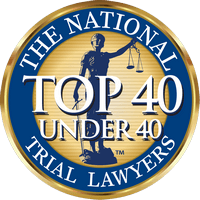
Trains derail. They collide with vehicles at railroad crossings and encounter rail obstructions. Railroad employees deal with railyard dangers while loading, maintaining, or servicing trains.
Railway passengers can sustain devastating injuries while entering and exiting trains, railway stations, and access platforms. When a train derails, multiple passengers are injured. The power-driven impact of a train colliding with a car or truck can destroy a vehicle. If the occupants survive the crash, they rarely walk away without injury.
Trains and pedestrians occasionally cross paths, as well. When they do, fatal injuries are inevitable. Train accident injury victims sustain catastrophic injuries and impairments that change the way they live their lives.
If you or a loved one were hurt in a train-related accident, you need a Seattle Train Accident Lawyer who is willing to face the responsible parties and do what it takes to protect your legal rights.
Seattle Train Accident Attorney
Boohoff Law Seattle Office
920 5th Ave, Suite 1530, Seattle, WA 98104
Free Consultation
We Are Here For You 24/7
Responsible Parties Must Pay for the Injuries They Cause

At Boohoff Law, we understand that railway injury cases require dedication, skill, and a willingness to take on powerful opponents. These cases often involve complex legal issues, horrific injuries, and high-profile defendants.
Our primary concern is recovering damages for our injured clients. We know what’s at stake, and we have no problem confronting a major national railway institution or a local transportation icon.
Our personal injury attorneys have always committed their knowledge, experience, and law firm resources to provide the best outcomes for our injured clients. We have understood that a financial recovery cannot fix our clients’ injuries or take away their pain.
We’ve worked hard to recover damages because they provided the income our clients’ needed to care for their families, return to normalcy, and improve their lives.
Our Law Firm’s Results
Tatiana Boohoff and Boohoff Law handle cases for injured clients only. Our personal injury lawyers are skilled and experienced. We understand the subtleties of evaluating liability and injuries. We can look at the evidence and determine which parties share responsibility for the damages.

When possible, our attorneys have negotiated injury claims directly with defendants, self-insured entities, insurers, and their legal representatives. We have participated in dispute resolution forums and resolved cases through facilitated negotiation.
We’ve worked hard to deliver the outcomes that best meet our clients’ current and future needs. If that meant preparing a client’s case for an inevitable trial, we’ve had no problem meeting that challenge.
Boohoff Law attorneys are proud of the settlements and verdicts we’ve recovered for our injured clients. As each case is unique, we can’t guarantee a specific result.
We can, however, promise to dedicate our firm’s resources to achieving the best possible outcome. We believe the comments on our Client Testimonials page demonstrate our firm’s dedication.
Train Collisions in Washington and Seattle
Trains are playing an increasing role in meeting Seattle’s transportation and freight needs. Link Light Rail and Seattle Center Monorail transport passengers to the Sea-Tac Airport, University of Washington, Downtown Seattle, and other key destinations.
Amtrak delivers passengers to regional and national destinations. Commercial rail companies carry goods throughout the state and across the country.

The Washington Utilities Transportation Commission lists 31 commercial railroad companies operating in the state, with four located in Seattle. With so much rail activity, accidents and injuries become an inevitability.
The tragedy became front-page news when the Amtrak Cascades train derailed near Seattle in December 2017. The new train lost control while navigating a curve on an overpass. It fell to the highway below, killing three passengers and injuring 57 crew members and passengers. The derailed train and its detached components damaged eight vehicles on the highway and injured eight vehicle occupants.
The accident caused 25.8 million dollars in property damage, including the damaged train cars. After a lengthy investigation, the National Transportation Safety Board determined that excessive speed while navigating a curve was a significant contributing factor to the accident. The train didn’t have Positive Train Control or another system for effectively mitigating the dangers of a hazardous curve.
Also, the train was new, and the crew was inadequately trained to handle the equipment. The NTSB’s final Railroad Accident Report also listed Amtrak rail car issues that increased the potential for passenger injuries.
- The new rail cars didn’t meet regulatory strength standards
- No passenger restraints
- Rotating seats reduced passenger safety
- No infant and child safety seating or securements for passengers’ child safety seats
- Secondary collisions due to failed rail car connections
- Improperly secured wheelchair lifts ejected during the crash
Incidents like the Amtrak derailment and other major train accidents remain in the headlines long after the occurrence. Multiple pending lawsuits keep the curiosity from waning.
You hear very little about less dynamic accidents, but state and federal agencies document the incidents and track the numbers. The Federal Railroad Administration Office of Safety Analysis documents and categorizes fatal and non-fatal incidents nationwide.
- Rail crossing incidents
- Railyard incidents
- Contractor incidents
- Fatal and non-fatal incidents
- Worker, non-worker, and trespasser injuries
Locally, the Washington Utilities and Transportation Commission compiles Washington State Crash Statistics. The casualties listed as “trespass fatalities” often involve pedestrians injured while crossing over rails or walking within a railroad’s right-of-way.
- 2019 Trespass Fatalities: During the first three months of 2019, three pedestrians lost their lives in fatal rail accidents in Yakima, King, and Skagit Counties.
- 2018 Grade Crossing Fatalities: Five pedestrians and one vehicle driver died in railroad crossing incidents in Pierce, Lewis, Snohomish, Benton, and King County.
- 2018 Trespass Fatalities: 17 pedestrians and one vehicle driver were fatally injured in Washington train accidents: Six in King County, three in Snohomish County, three in Pierce County, two in Yakima County, and one in Spokane, Cowlitz, and Whatcom Counties
Train Accident Injuries
The Amtrak Cascades derailment provides insight into the nature and extent of potential railroad accident injuries. The passengers who died sustained catastrophic injuries consistent with severe physical body trauma or ejection from an overturned train.
When pedestrians collide with a high-speed train, fatal injuries are usually inescapable. When injured train accident victims survive, they live with disabilities caused by spinal cord injuries, traumatic brain injuries, and multiple traumas.
Common injuries include:
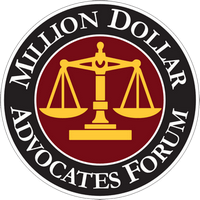
- Severe burns: Fourth, fifth, and sixth-degree burns inflict significant damage. They cause damage and scarring through all skin levels, and through fat, muscle, and bone.
- Crushed limbs and amputations: The crushing weight of a train easily destroys a limb. Amputation is often instantaneous when a heavy object crushes a body part.
- Traumatic brain injuries: The effects of a severe traumatic brain injury often last a lifetime. As the Centers for Disease Control and Prevention explains, severe brain injuries cause long-term problems with thinking, memory, learning, balance, and other critical bodily functions.
- Multiple fractures: Severe fractures often require internal surgical fixation with plates and pins to maintain a bone’s strength and integrity as it heals.
- Internal organ damage: Internal organ damage occurs with crushing injuries, spinal fractures, and pelvic fractures.
- Spinal cord injuries: An injured spinal cord can lead to paralysis from the damaged portion of the spine downward. The damage severity also plays a role in bodily function losses.
- Fatal injuries: Train accidents often cause fatalities due to severe trauma or multiple catastrophic injuries.
Who Is Responsible for Train Accidents?
Washington Administrative Code, Chapter 480-62, and Federal Transportation Code, Title 49 Subtitle B Chapter I outline railroad safety standards and requirements.
As with other companies, railroads must keep their equipment, rail lines, locations, and operations safe and prevent harm to others. They must also operate their railroads safely to avoid collisions with vehicles and pedestrians.
When railroads and their employees fail to protect their passengers, coworkers, and pedestrians, the railroad company is responsible for the damages they cause.

- Railroad personnel: Conductors, engineers, and other train crew members must perform their duties properly to prevent an accident. This includes operating a train at reasonable speeds, learning correct equipment operation procedures, eliminating distractions, and watching for obstacles on the rails, including pedestrians.
- Maintenance crews: Those in charge of maintaining trains must be proficient at servicing trains and complicated operating systems.
- Management: Management and supervisory personnel must hire and train only qualified employees. They must supervise their performance and implement a preventative and monitoring strategy to prevent substance abuse, distracted operation, and other issues.
- Railroad owners: The NTSB suggests that Positive Train Control collision avoidance technology could have prevented the 2017 Amtrak derailment and other collisions. All trains were required to meet PTC requirements in 2015. Some railroad companies requested extensions to delay implementation.
- Railcar manufacturers: Passenger cars in the Amtrak derailment weren’t strong enough to prevent the compartments from coming apart under the force of multiple impacts. This allowed passenger ejection and reduced the safe space within compartments. Rotating seats, lack of safety restraints and child restraints, and adequate wheelchair management were also potential design flaws.
- Rail system design: Pedestrians often cross rail lines as they have no other reasonable alternatives to move from one place to another. This design issue encourages pedestrian/train accidents.
What Damages Can I Recover for My Injuries?
Traditionally, injury settlements include economic damages and noneconomic damages. Washington courts occasionally award exemplary damages to punish a defendant. Courts consider punitive damages when the evidence proves that the defendant acted with malicious disregard for the plaintiff.
Economic damages pay a plaintiff’s out-of-pocket costs. When treatment is ongoing and indefinite, an economist or other specialist projects future costs for settlement purposes. We also rely on experts when projecting future net income losses for a wrongful death case.
Economic damages include:
- Income losses
- Current medical bills and future medical expenses
- Mobility devices and structures
- Prosthesis and limb replacements
- Corrective surgery
- Physical and emotional therapy
- In-home care and support expenses
- Medical transportation
- Replacement services
- Funeral and burial costs
Noneconomic damages or general damages consider a plaintiff’s emotional, psychological, and lifestyle issues. They are often difficult to calculate as they are based on the injured person’s subjective self-assessment.
Noneconomic damages may include:
- Pain and suffering
- Impairments and disabilities
- Emotional distress
- Changes in family dynamics
- Losses to spousal relationships
- Loss of bodily functions
- Scars and disfigurement
When an accident injury case involves a wrongful death allegation, a decedent’s settlement includes incurred economic costs and pain and suffering endured prior to death. We also rely on an economic expert to project future net income losses.
Seattle Train Accident FAQs
Like motor vehicle accidents, train accidents happen for a variety of reasons. In fact, it’s rather rare for two train accidents to be caused by the same specific factors.
Nonetheless, human error and equipment failure are reported as the most common causes of train accidents. Human error leading to a train accident is a fairly self-explanatory concept. However, it can be far more complicated than a conductor merely failing to drive a train properly.
To operate effectively, trains require the expertise of several highly skilled technicians working collaboratively. Under normal circumstances, there are safeguards in place that help prevent one employee’s mistake from causing a catastrophe. If multiple errors occur close in time, safeguards may fail to keep operations in order.
Human error on the part of the engineers and technicians who inspect and maintain trains before clearing them for operation may also contribute to causing an accident.
With trains, proper maintenance and repair require highly specialized skills. If a few out-of-place screws go unnoticed or a cracked engine piston is neglected, an accident may occur. Equipment failure, too, can be more complicated than it seems. Modern trains are remarkably complex machines requiring multiple systems working harmoniously to ensure safe operations.
An accident may result from equipment failure if only a few gears fail to stay in sync. Beyond the train itself, to operate smoothly, these machines require that external mechanisms, such as switchboards and electronic signals, function properly.
Despite years of experience among mechanics and technicians, visual inspection may make equipment defects undetectable. For example, a hairline fracture in the center of a metal gear may go unnoticed until the crack becomes more pronounced or the entire gear shatters under pressure.
Thus, even the most scrupulous inspectors may not be able to control the root causes of train accidents.
Train accidents can happen almost anywhere, although they most commonly occur at unmarked railroad crossings. Railroad crossing accidents may happen when a train strikes an automobile that tried to “beat” the train across the tracks.
Many drivers underestimate how fast a train is approaching or how long it takes a train to come to a complete stop. A train traveling at full speed can require nearly a mile of track to fully stop! In other circumstances, a driver simply may not notice that an oncoming train is approaching.
For example, a broken traffic signal at a rail crossing may fail to put an automobile driver on notice. Not all train accidents involve full-on collisions with automobiles or pedestrians. In fact, some train accidents involve no direct contact between the train and another vehicle or person.
Rather, many train accidents stem from derailments, cargo spills, or leaks. Trains often transport hazardous chemicals or waste, which can cause serious bodily injury to individuals in the vicinity if they are improperly secured and overturned.
Yes, in fact, multiple investigations by multiple entities may occur in the aftermath of a train accident. Due to the complexities associated with trains, completing accident investigations may require a significant amount of time.
By design, railways travel through many different states, regions, and localities. As a result, federal agencies may be inclined to investigate an accident. Two federal entities are charged with investigating train accidents, the National Transportation Safety Board and the Federal Railroad Administration.
Agency investigations usually involve forensic analysis of the scene and interviewing witnesses. After the investigation, the TSB and FRA will issue a report discussing contributing causes and responsible parties. An accident report contains critical evidence should victims later pursue legal action.
A single train accident may implicate multiple potentially liable parties. Generally, any party or person whose negligence at least partly contributed to causing the accident may share responsibility for the accident and any accident-related damages.
Although engineers, train technicians, and railroad companies are under the most scrutiny after an accident, liability may extend to many individuals or entities.
For example, if a defective part caused the accident, the part manufacturer may share liability for resulting damages. On the other hand, individuals without involvement in the train’s design or operation share responsibility for an accident.
For example, a driver may park their vehicle too close to the railroad tracks and cause an accident. In that case, the vehicle owner may be liable for accident-related damages. Oftentimes, it’s difficult to determine who is at fault before agencies and attorneys complete their investigations.
Yes, even if you believe you have only sustained minor injuries, you should seek a medical evaluation as soon as possible following a train accident. Many serious injuries and even life-threatening injuries may go undetected for days or weeks after an accident.
Injuries that do not immediately exhibit symptoms may require diagnosis by a medical professional. Ultimately, the quicker your injuries are diagnosed, the sooner you can begin receiving treatment. Should you decide to pursue legal action, documentation of your medical expenses is necessary for determining the value of your claim.
Seeking an evaluation by a medical professional in the best way to demonstrate the extent and severity of your injuries.
Accident victims should consult an experienced attorney as soon as they are able. Even if you are uncertain whether you will file a claim, an attorney can help you understand and weigh your options.
Additionally, as train accident lawsuits can require an extensive investigation, scheduling an initial consultation right away provides more time for an attorney to develop a legal strategy and begin strengthening your claim.
Boohoff Seattle Law Train Accident Lawyers

If you or a loved one has been injured in a train or railway accident, you need a law firm that’s dedicated to getting you the fair compensation you deserve.
At Boohoff Law, our attorneys have worked hard to recover damages for our injured clients. Let us determine if we can help you.
Contact Boohoff Law at (877) 999-9999 or complete our contact form at Boohoff Law online. We’ll schedule a consultation to review your case.
Boohoff Law, P.A. – Auto Accident Lawyers
Seattle Location
920 5th Ave, Suite 1530
Seattle, WA 98104
Phone: (206) 451-1111
Our process.
-
1. Understanding your optionsFrom your first call, our team takes the time to listen and learn your unique situation. We’ll walk you through the factors that will increase the value of your claim and help you mitigate risks. Above all, we help you envision a personalized path forward.
-
2. Connecting with your attorneyYou will know within 1-2 days if our team can help. Your personal attorney and legal team will guide you through what to expect, ensuring you’re always informed about what’s going on. You will stay in control as an included member of the team working on your case.
-
3. Supporting documentationOur diligent legal team will work with you to make sure all the necessary documentation is complete. This includes insurance policy details, medical records, medical and repair bills, and lost wages.
-
4. Formulating a winning plan
We’ll assess your case every detail, every angle as we fight for the outcome you deserve. We roll up our sleeves and bring an unrelenting commitment and proven track record to formulate a winning game plan, keeping you clearly informed along the way.
-
5. Negotiation and litigationWe are relentless in pursuing what’s right. We work with toughness and resilience as we negotiate directly with the defense to obtain the compensation you deserve. In cases that demand a court trial, our attorneys are expert personal injury litigators with the talent to maximize policy volumes and outcomes.
Recovery is personal.
We’re here for you.
We’re close by. And if you can’t make it to us, we’ll meet you where you need us, at home or in the hospital.
You're better off with Boohoff.
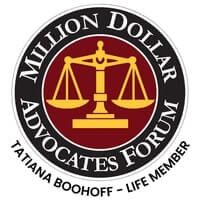


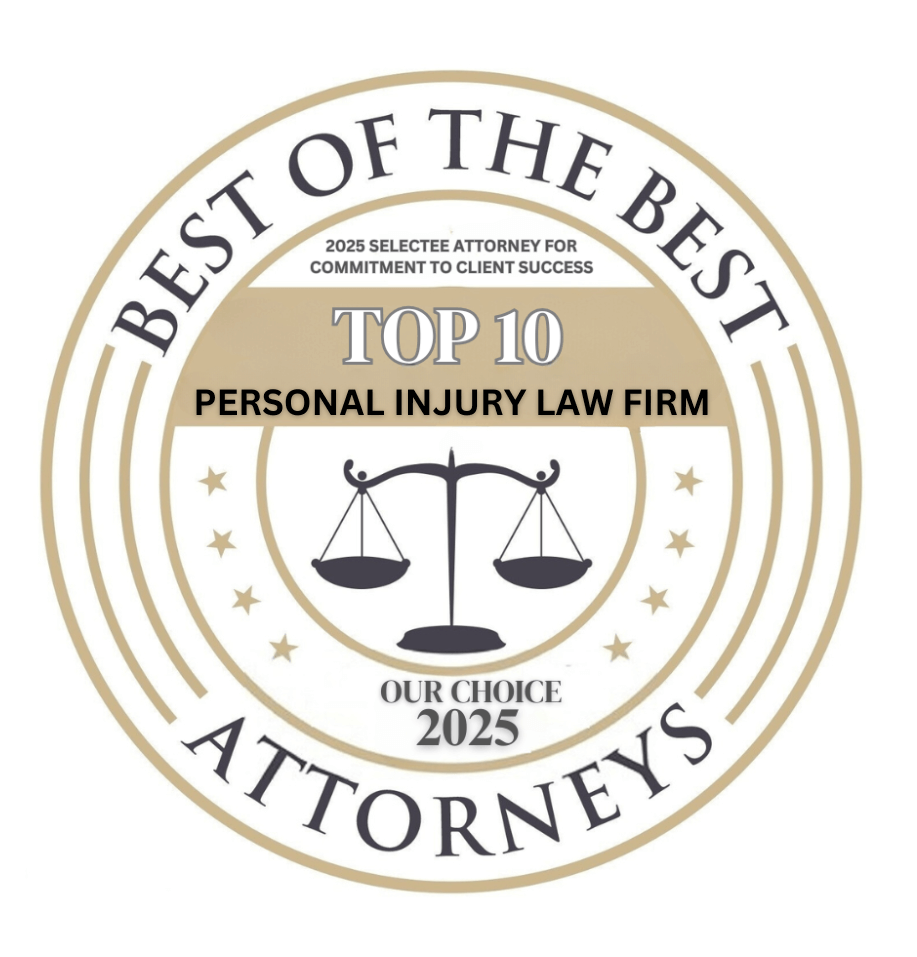
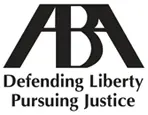
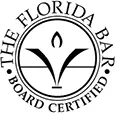
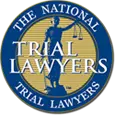
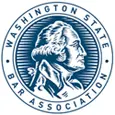



The information on this website is for general information purposes only. Nothing on this site should be taken as legal advice for any individual case or situation. This information is not intended to create, and receipt or viewing does not constitute, an attorney-client relationship.
available 24/7
(877) 999-9999
